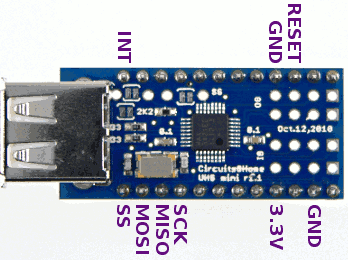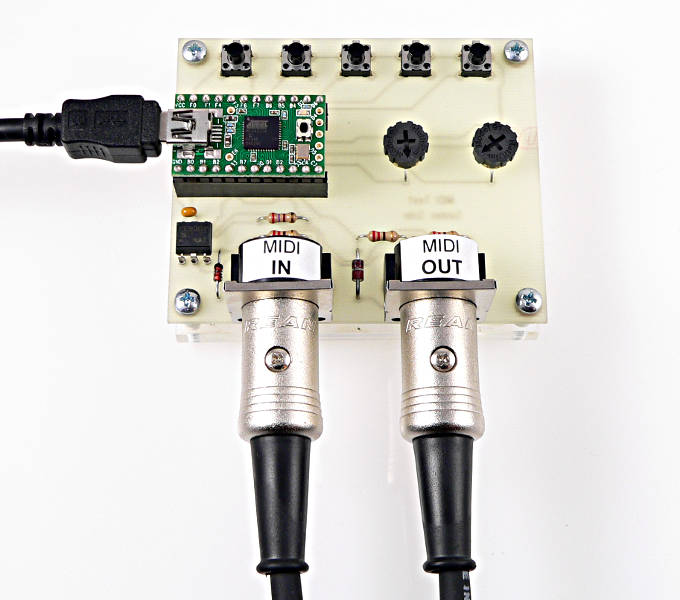

The Uno's power jack was just a little higher than the Mega's.

It took longer than I expected, mostly the cutting of holes in the dollar store jewellry box, and then recutting them to fit the new Arduino Uno instead of the Arduino Mega. In short (no pun intended), once I breadboarded it, I did some groundwork (no pun intended, again!) to make sure it would not burn anything out. The Arduino still uses the TX pin for the uploading process. Another important point when building any stage of this project - prototyping on a breadboard or permanent, is to disconnect the Arduino TX pin from the 74HC14 IC before you upload the sketch. Wondering how that works with the MIDI protocol to produce a logic HIGH to the MIDI device? Sparkfun provides a good MIDI tutorial on the subject which I highly recommend you read, at least the first two pages, before you start the project. They way the MIDI protocol works with this particular setup is that current only flows when the Arduino pin used, D1 (TX) goes low. Please do your own footwork to ensure any project you make will not burn out anything in your project.

Save it and open it to get a better view.
ARDUINO USB HOST SHIELD MIDI CODE
It was one of the simpler projects to build on a breadboard and the code was already provided in the library for the USB Host Shield. Once I started to investigate the process of making a MIDI device that would accept a USB MIDI keyboard and found ending up finding a very simple solution with the USB Host Shield, which I already had, I was a little disappointed that I did not build this sooner. The second problem is that I had no MIDI Thru box. I suppose this is made worse by the fact that I have no permanent setup for making my music.
ARDUINO USB HOST SHIELD MIDI PC
The first, in my book was that a PC takes time to boot up, connect the audio/MIDI interface and any other accessories that I might want to use with my laptop. There were two problems that I had right away. Granted, I had none at the time, but I started out by getting the Volca Keys. Having seen different hardware such as MIDI Thru boxes and already having a audio/MIDI interface, I knew I could connect my USB MIDI keyboards to the PC and play all the Volcas at once. The price point of these synths is great for getting further into the synth world and the various models is great for expanding functionality.

Watching more videos, I was seeing some cool music being made by using their sync ports and then I noticed some people using the MIDI In. I have a Casio XW-G1 and was looking into that when I started to see some interesting music being made with the Korg Volca synths. This project began when in spirit when I started watching YouTube Videos on synthesizers. Given all that, technically, the project currently provides MIDI Thru functionality instead of MIDI Out.) The manufacturer of the USB Host Shield I used is not in case you were wondering. Unfortunately, the replacement USB Host Shield does not easily allow extra code and I never did get any support from the manufacturer. (Originally, this project was intended to have a few more features added such as applying velocity values to messages sent to a Volca FM, which requires a special message to get velocity values applied to notes.


 0 kommentar(er)
0 kommentar(er)
